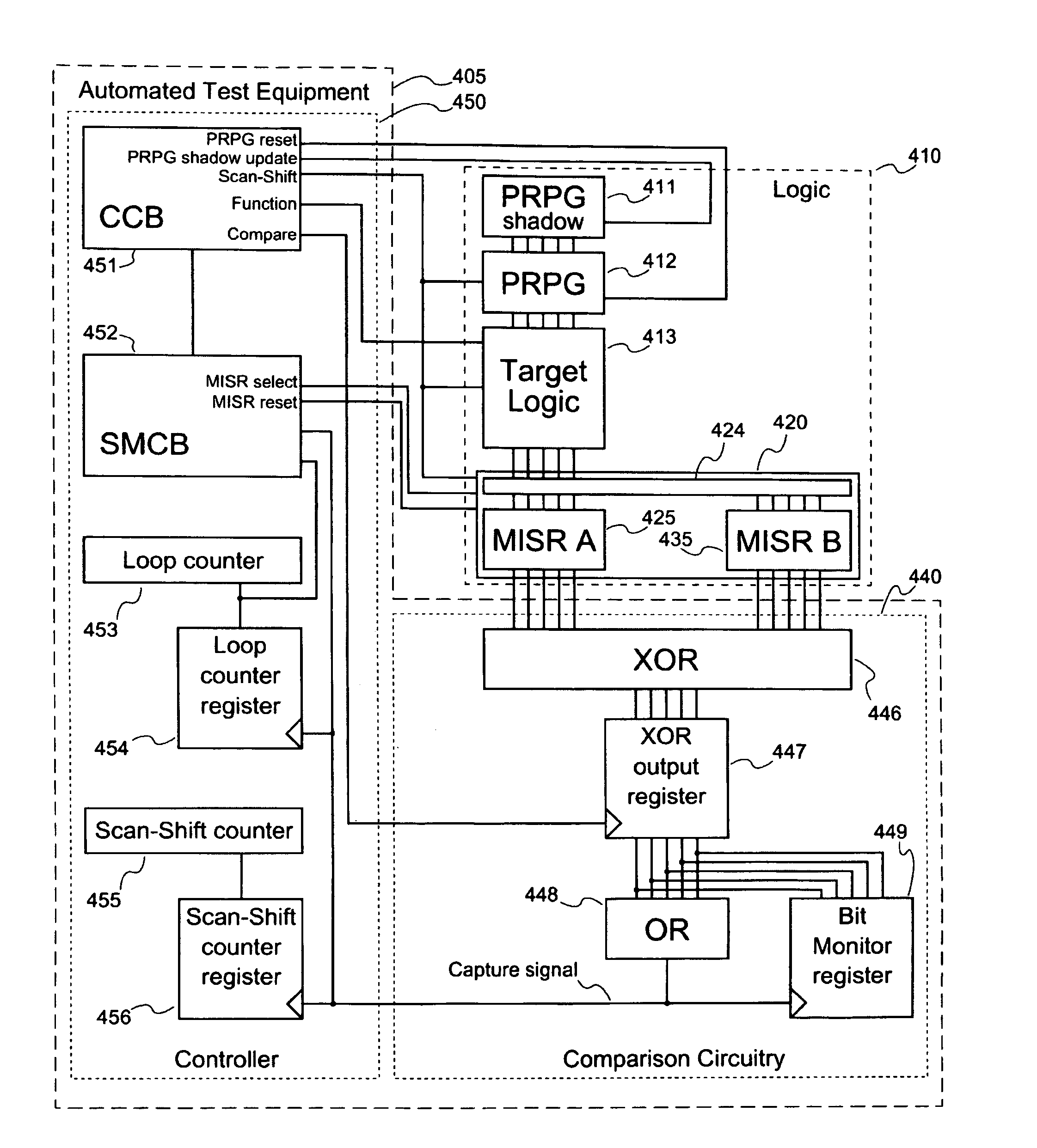Systems and methods for diagnosing rate dependent errors using LBIST
a technology of rate dependent errors and diagnostic methods, applied in the field of electronic circuit testing, can solve problems such as at-speed errors
- Summary
- Abstract
- Description
- Claims
- Application Information
AI Technical Summary
Benefits of technology
Problems solved by technology
Method used
Image
Examples
Embodiment Construction
[0025]One or more embodiments of the invention are described below. It should be noted that these and any other embodiments described below are exemplary and are intended to be illustrative of the invention rather than limiting.
[0026]As described herein, various embodiments of the invention comprise systems and methods associated with logic built-in self-test (LBIST) circuitry to identify the existence of “at-speed” logic circuit defects and provide data to localize the defect in the devices under test.
[0027]In one embodiment, LBIST circuitry, in conjunction with automated test equipment (ATE) is used to process input patterns through target logic within a device at two different functional rates, capturing and then comparing the computed patterns produced by the target logic. The LBIST circuitry of the target device consists of (in part) a pattern generator (e.g., a pseudorandom pattern generator, PRPG,) a shadow register for storing the PRPG state, a set of scan chains, and two mu...
PUM
 Login to View More
Login to View More Abstract
Description
Claims
Application Information
 Login to View More
Login to View More - R&D
- Intellectual Property
- Life Sciences
- Materials
- Tech Scout
- Unparalleled Data Quality
- Higher Quality Content
- 60% Fewer Hallucinations
Browse by: Latest US Patents, China's latest patents, Technical Efficacy Thesaurus, Application Domain, Technology Topic, Popular Technical Reports.
© 2025 PatSnap. All rights reserved.Legal|Privacy policy|Modern Slavery Act Transparency Statement|Sitemap|About US| Contact US: help@patsnap.com



